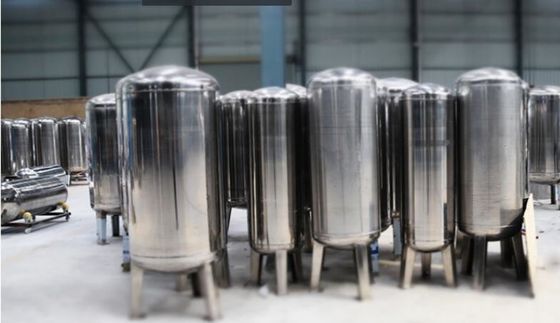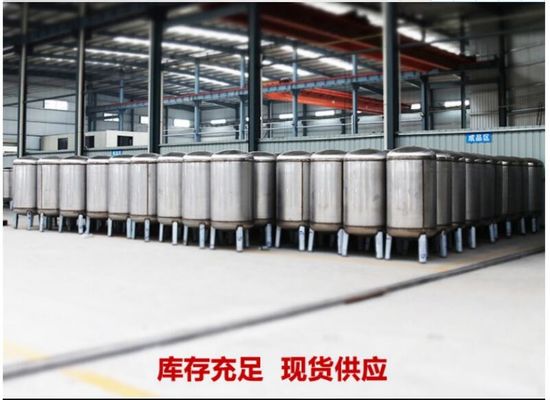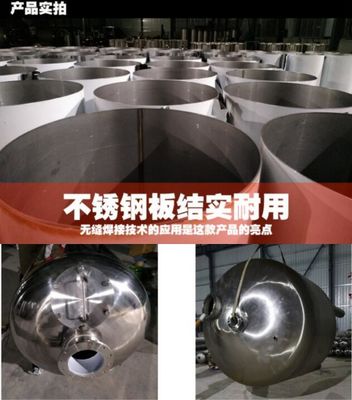Stainless Steel Water Treatment Spare Parts , Pressure Vessel Water Tank
Product Details:
| Place of Origin: | China |
| Brand Name: | Fenigal/OEM |
| Certification: | CE/UL/NSF etc. |
| Model Number: | FRP |
Payment & Shipping Terms:
| Minimum Order Quantity: | 1 Set |
|---|---|
| Price: | Negotiable |
| Packaging Details: | Standard Export Wood Crate/Carton or Naked wrapped by film/Containerized |
| Delivery Time: | 15~30 days |
| Payment Terms: | T/T, Western Union, Paypal etc. |
| Supply Ability: | 10,000 set per month |
|
Detail Information |
|||
| Techno Filtrationlogy: | Pressure Vessel | Material: | Stainless Steel |
|---|---|---|---|
| Design: | Skid Mount/containerized | Water Temp.: | 5~35˚C |
| Element: | 1-8/vessel | Voltage: | 380V,415V,220V,can Be Customized |
| Dimension: | 40",80",120" Etc. | Size: | Dia.2.5"/4"/8" |
| Control: | Electronic,Manual/PLC | ||
| Highlight: | 0.6Mpa Water Treatment Spare Parts,Stainless steel pressure vessel water tank,0.6Mpa pressure vessel water tank |
||
Product Description
Water Treatment Stainless Steel Pressure Vessel Water Tank Sand Filter
1. Funcition
Water tanks are liquid storage containers.
These tanks are usually storing water for human consumption.
A water tank provides for the storage of drinking water, irrigation agriculture,fire suppression,agricultural farming and livestock, chemical manufacturing,food preparation as well as many other possible solutions.
2. Material
Various materials are used for making a water tank:
Plastics (polyethylene, polypropylene), fiberglass,steel (welded or bolted, carbon or stainless).
|
Diameter (mm) |
Enclosure Material | Filter Material |
Interal Pressure |
Control | Function |
| 200-3000 |
Stainless Steel, FRP(Fiber Glass Reinforced Plastic), A3 plastic lined steel
|
Quartz sand, anthracite or pyrite ore | 0.6Mpa | Manual control or imported Autotrol / fleck multi valve control | Remove large particles and colloids from water |
3. Design parameters
Water tank application parameters include the general design of the tank, its materials of construction, as well as the following.
1. Location of the water tank (indoors, outdoors, above ground or underground)
2. Volume of water tank will need to hold
3. What the water will be used for
4. Temperature of area where water will be stored, concern for freezing.
5. Pressure requirements
6. How is the water to be delivered into and extracted, pumped out of the water tank.
7. Wind and Earthquake design considerations allow water tanks to survive seismic and high wind events.
4. Water tank application
Water tanks are liquid storage containers.
These tanks are usually storing water for human consumption.
A water tank provides for the storage of drinking water, irrigation agriculture,fire suppression,agricultural farming and livestock, chemical manufacturing,food preparation as well as many other possible solutions.
![]()
![]()
![]()
![]()







